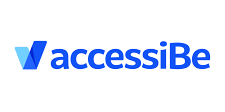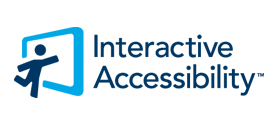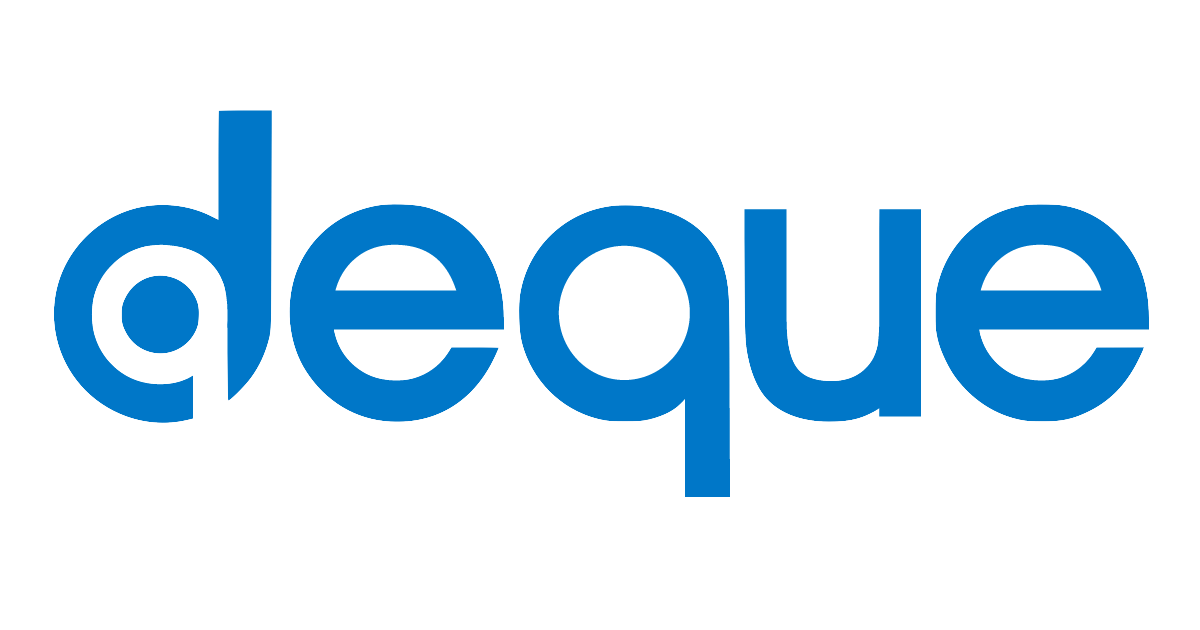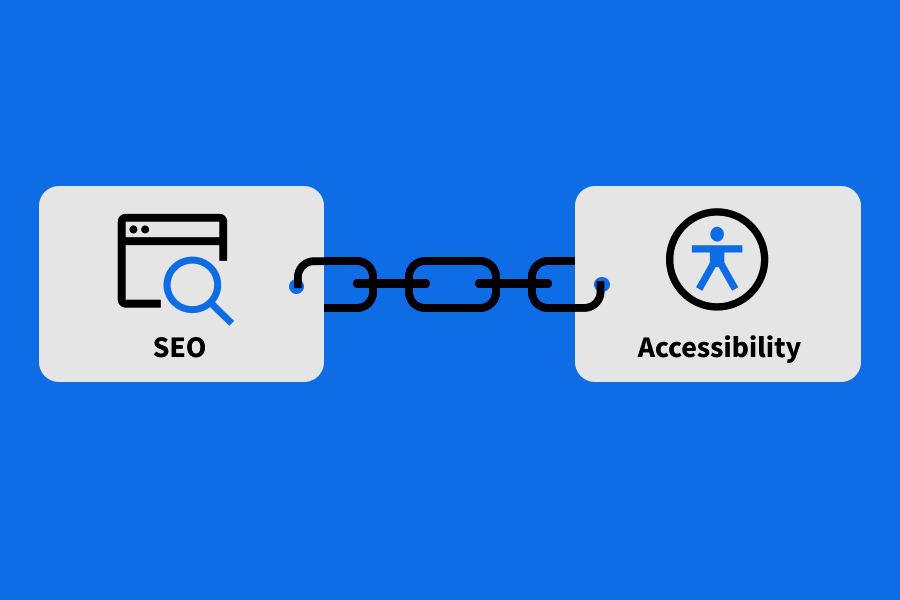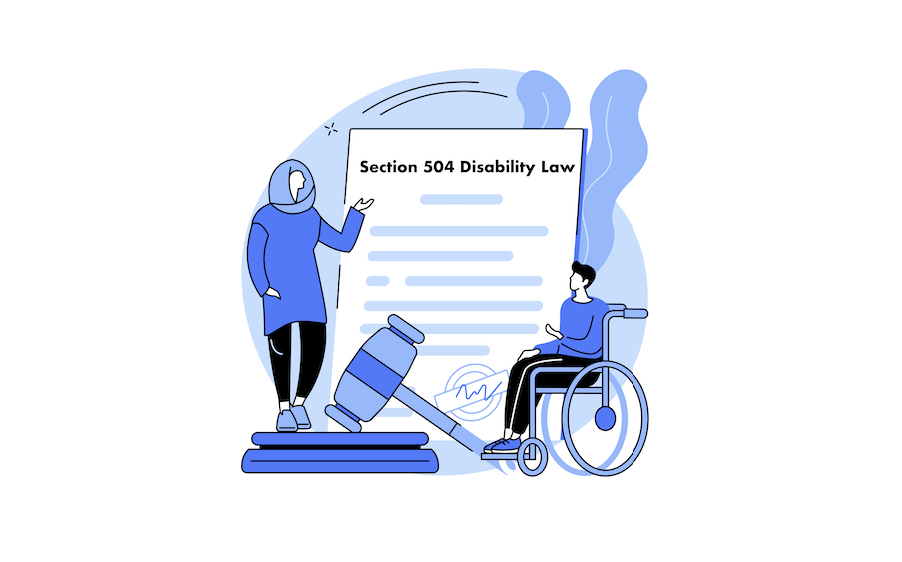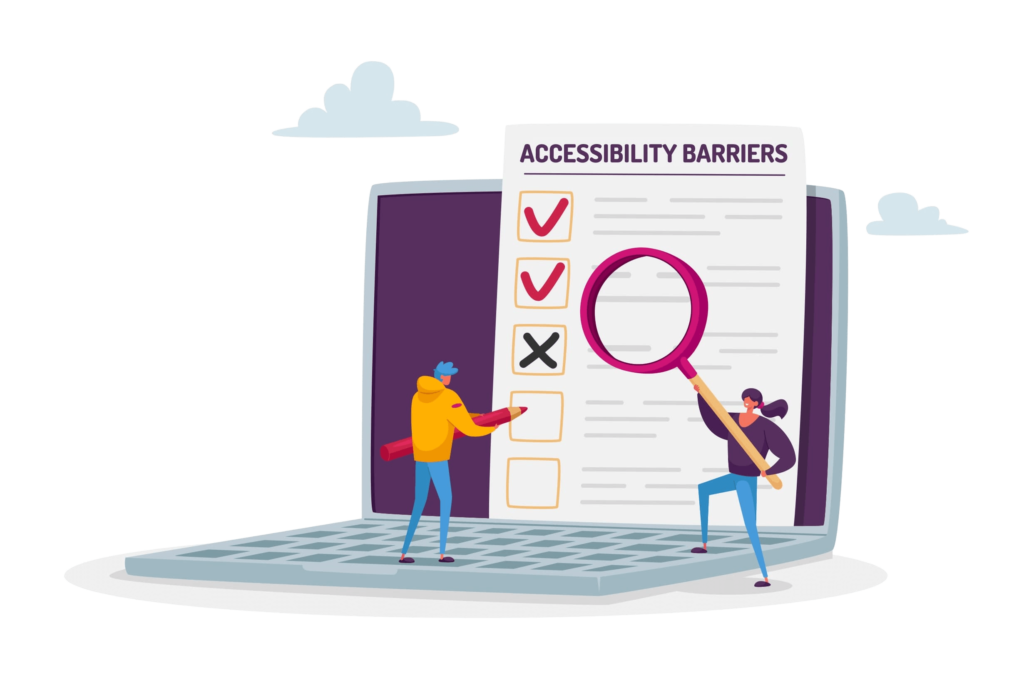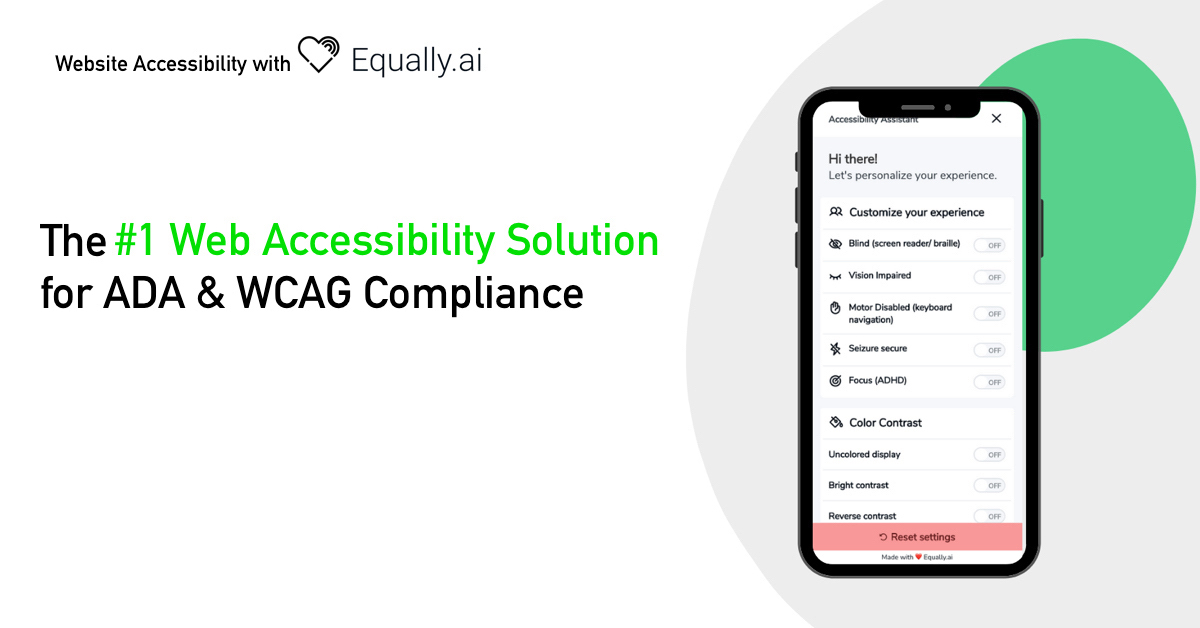
Web accessibility in the twenty-first century is becoming increasingly more important. Living in a digital world where the word ‘Google’ became a verb. Googling information is part of everyday life. We are living in a world where even currencies are only online. It is difficult to imagine not being able to access all information online, isn’t it? But still, more than 90% of the websites online are not fully accessible. Even with the best intentions, it can still occur that some content has barriers for people with specific disabilities, such as loss of hearing or visual disabilities. Nowadays governments around the world have created guidelines and regulations to follow. In this article, we will dive deeper into Web Accessibility Compliance so you understand it all.
Why is Web Accessibility Important?
Before we start to explain what Web Accessibility Compliance is, it is important to understand why web accessibility is necessary. Besides the fact that web accessibility is an important social movement. Having the right information at all times, eliminating digital obstacles, and improving efficiency are mandatory today. Besides providing your website audience all information they have the right to, you will also open up your website to millions of people all over the world. Web accessibility standards are, without a question, a critical foundation for an inclusive and accessible online economy in the twenty-first century. They most definitely result in economic activity and employment creation, among other things.
International Awareness
There is a shift in perspective about accessibility happening all across the globe. You may have noticed that your phone or iPad has a new feature that allows you to capture voice recording. You may also tweak your computer’s settings to enhance font sizes and audio. This is due to a greater understanding of online accessibility for persons with disabilities. More nations across the globe have legislation in place that guarantees fundamental accessibility and non-discrimination in the access and use of information society technology, goods, and services. Any kind of social interaction should not be overlooked. When you are in charge of a website, you must be aware of the laws that govern it.
In the Information Society, accessibility is both a right and an added benefit. It ensures that everyone, regardless of their physical or technical state, has access to the web’s goods, environments, and services. We need Web Legislations with clear rules that may be followed to achieve the goal of online inclusion. Because the majority of individuals want to make their website accessible to everyone, yet the primary reason why just 1% of all websites are accessible is a lack of understanding. Let’s go a little further into the subject of online regulation. What laws govern the internet? What is the most significant web law in each country? Let’s take a look at all of the online accessibility standards.
What are the Different Web Accessibility Compliances and How Do They Work?
Web accessibility laws, also known as web legislations, regulations, standards and guidelines. They are laws designed to guarantee that individuals with disabilities can access the same information on the internet as those without mental or physical impairments. People with disabilities should be able to see, interpret, browse, engage, and contribute to the online world just like anybody else, thanks to Web accessibility compliance this is becoming more known. It also helps other users, such as elderly people whose capabilities are changing as a result of aging.
Examples of Web Accessibility Compliance Implications
The following web components are being implemented as a result of web accessibility compliance laws:
- The information on a website or online application, including natural features like text, picture, video, and audio, is referred to as content.
- Multimedia content players and other user agents are included in browsers.
- Screen reader applications, screen magnifiers, and alternate keyboards, among other things, are examples of assistive technology used by individuals with impairments and limited mobility.
- The knowledge, experience, and, in certain instances, adaptive methods for utilizing the internet of the user. Developers, designers, programmers, and writers are all involved, as are developers with impairments and users who contribute material.
- Authoring software is software that is used to build websites.
- Accessibility assessors, HTML validators, and CSS validators are just a few examples of assessment tools.
Who Are Affected by the Web Accessibility Laws
Web accessibility rules and standards are in place to assist individuals with impairments in fully using the Internet. People with disabilities are unable to access all information due to hurdles and restrictions in the lack of accessibility guidelines. People with disabilities, on the other hand, can utilize all of the information and services available on the internet when sites are truly accessible. For example, not buying food online because there is no simple method to browse the menu or contact the business, and not accessing a government website for additional information about your data are both frequent obstacles. If there is no alt. text with a visual description, pictures and graphics are not perceived by blind people. The alt. text can be picked up by screen readers, and the description can be read aloud. All of these are simple changes that may be made quickly.
On the other hand, it is natural to connect online accessibility regulations and their advantages with social responsibility when considering their benefits. This also aids in the improvement of a company’s or institution’s image. Aside from that, the quantity of new clients, or individuals who can suddenly visit your website, is a factor. It is impossible to overlook the democratic availability of services, goods, and information for persons with disabilities.
Advantages of Web Accessibility Compliance
It is beneficial for you to improve your internet presence in this manner. You get additional advantages by making your website accessible while adhering to the standards, such as.
- Page loading time will be reduced.
- Improved search engine visibility (SEO)
- Display optimization for mobile devices
- Navigation on the website that is focused on the user
- All of these factors improve your site’s user-friendliness, which not only improves client loyalty but also strengthens your company’s image, resulting in more new and happy consumers in the long run.
What Does it Mean to be Compliant?
When a website or social media page includes elements that match with the functional and technical standards, then this page is complying. These requirements may be country-specific or set out by the WAI. Your website must contain tools and features to be compliant. This guarantees that everyone can use it, regardless of their technical or physical limitations.
What are Web Accessibility Compliance Guidelines, and why are they important?
In the 21st century, web accessibility is a strong weapon in the active battle to bridge the digital gap. As a result, design organizational tactics and public policies must be promoted. Everyone may connect via information and communication technology as a result of this. It is also a critical activity in the medium and long-term technical and cultural development of civilization. It should go without saying that advocating, creating, and implementing online accessibility standards aids in the stimulation and encouragement of innovation. They also help to build, expand, and promote the brand.
We must realize that following online accessibility standards allows anybody to get access to knowledge and information without difficulty. They enhance the likelihood of inequity and inequality, particularly in terms of personal and professional growth possibilities. Likewise, the so-called information society, promoting social inclusion and active citizen engagement.
Web Accessibility Laws Around the World
If you see the significance of online accessibility and wish to enhance your website, bear in mind that various rules apply depending on where you are. We’ve compiled a list of the country-specific criteria. The Web accessibility compliance applies to different nations are listed here.
Australia
Australian Disability Discrimination Act of 1992
What it covers:
- People with impairments have easy access to all information on the internet.
- Providing multiple forms of the same information in order to accommodate people with various disabilities.
- Using Braille and other non-verbal communication techniques, such as sign languages, for no cost
- Ensures that private organizations that utilize the Internet and social media provide alternatives for handicapped people to access their information.
Who must comply: All public and private organizations, as well as individuals who operate websites or social media profiles in Australia, must comply. It covers a wide range of activities, including work, education, personal and professional services, telecommunications, sports, and entertainment.
Penalty: Any private or public entity that does not have an easily accessible website or social media profile may be charged with non-compliance, which may result in a fine as well as brand harm.
Canada
1. The Accessible Canada Act
What it covers:
- The Accessible Canada Act is comprehensive accessibility legislation that extends beyond internet accessibility. It ensures that individuals with disabilities may easily buy products and request services, as well as have equal access to job opportunities, a convenient transportation network, and an internet connection with suitable tools to guarantee a positive experience.
- Users may quickly report and resolve problems connected to accessibility thanks to provisions for an effective user support service.
Who must comply: All federally funded organizations, including both the public and private sectors, are required to comply. They must also adhere to the WCAG 2.0 AA guidelines.
Penalty: All federally funded organizations, including both the public and private sectors, are required to comply. They must also adhere to the WCAG 2.0 AA guidelines.
2. Accessibility for Ontarians with Disabilities Act (AODA)
What it covers:
The AODA contains websites related to goods and service transportation.
- On the Internet, information on technical, private, and public activities must have suitable accessibility elements.
- Orders NGOs, the corporate sector, and the government to develop a barrier-free communication system.
Who to comply: Websites for the public, corporate, and non-profit organizations must have suitable accessibility and authorization features. They must also follow the WCAG standards (described below), with the exception of the pre-recorded audio restriction for persons with hearing impairments.
Penalty: Non-compliance and violation on or after 1 January 2021 will mean a $100,000 fine.
All European states
EU Web Accessibility Directive (EN 301 549)
The current EN301 549 guidelines are based on conformance to WCAG 2.1 AA. The EN301549 standards provide a basis for the EU Member States to develop their compliance guidelines. By September 2018, each member state was anticipated to have finalized its rules.
What it covers:
- They do, however, currently serve as a minimum standard for the EU. The standard covers online and smartphone applications, but it also addresses a broad range of other technologies not covered by WCAG.
- Websites; Information and communication technology (ICT) products; Product-related services
- Any specialized telecommunications infrastructure required for the supply and routing of alternative communication formats for voice modality (such as text or pictures) may offer everyone access to services like emergency calls or relay services.
- Assures that all information on websites and social media is completely accessible.
- To improve the user experience, provide instructions on how to utilize their accessibility features.
- Create an outstanding user support service so that users can quickly report and resolve accessibility problems.
Who must comply: The requirements must be followed by every website in the European Union. By June 23, 2021, all public-sector mobile apps should be compliant with the standards.
Penalty: Noncompliance will result in legal action, penalties, negative media coverage, and a reduction in the number of users.
The United Kingdom
Equality Act of 2010
What it covers:
- People with impairments have easy access to the Internet and mobile applications.
- Make a statement about their accessibility initiatives on their websites.
- Websites involving the transportation of products and services, technology, and private and public activities are all eligible.
- On or before June 23, 2021, all mobile applications must adhere to the standards.
Penalty: Any commercial or public entity that does not have an easily accessible website or social media presence may face non-compliance charges, financial obligations, and brand harm.
The United States of America
1. Section 508 of the US Rehabilitation Act of 1973
What it covers:
- It directs government agencies to guarantee that all websites are accessible to people with impairments.
Who must comply: Every federal agency headquartered in the United States, including branches outside the nation, is required to comply.
2. The Americans with Disabilities Act of 1990 (ADA)
What it covers:
- Discrimination against people with disabilities is prohibited under the law.
- Ensures that everyone has the same rights and opportunities, regardless of their physical condition.
- All levels of government are required to establish a barrier-free, efficient communication system.
- Ensures that handicapped people get efficient customer service.
Penalty: All websites that do not satisfy Section 508 and ADA requirements may be fined and face negative publicity.
Japan
JIS X 8341-3 Standard
What it covers
- Ensures that handicapped and elderly people can comprehend the online and media sites.
- Websites involving the transportation of products and services, technology, and private and public activities are all eligible.
- At no additional expense, providing various forms of the same information to suit all needs.
- It applies to all federal government departments and organizations.
Who must comply: it applies to all federal public sectors and agencies.
Penalty: Noncompliance will result in legal action, financial penalties, and negative media coverage.
Israel
The Equal Rights for People with Disabilities Act of 2013
What it covers:
- Accessibility to the information given by technological means for persons with impairments and the elderly
- Deals specifically with online accessibility for institutional sites, information society services, and electronic commerce.
- Require that all Internet sites whose design or upkeep is paid for follow the accessibility guidelines at no expense.
Who must comply: Ministries, businesses, government agencies, non-governmental organizations, and others are required to comply.
Penalty: Any entity having a website or social media page that violates the regulations will be fined NIS 50,000 and will have its reputation harmed.
Italy
Stanca Act
The Stanca Act, Italian legislation, was enacted in 2004 to promote information technology accessibility. The law aims to enhance all Italian websites, including those run by the Italian government.
What it covers:
- Ensures that handicapped people have equal opportunities, are not discriminated against, and have universal access.
- All governmental entities and online assets are included.
- Adequate access to and use of information society and social communication media technology, goods, and services
Who must comply: The Stanca Act applies to both private and governmental sectors, municipalities, and businesses, including telecommunications, that the government controls in whole or in part.
Penalty: Failure to comply with the Stanca Act may result in legal action, penalties, and the loss of long-term clients.
Germany
Equal Opportunity Act
What it covers:
- Ensures that a document’s main language and data table summaries are identified and included.
- Through links, controls, and objects, the navigation sequence using the key Tab must be reasonable.
- It includes the concept of electronic access to information and services via systems that allow for their safe and understandable acquisition, with a focus on ensuring universal access to the design so that everyone may exercise their rights in the same way.
Who must comply: Federal entities, businesses, government-controlled institutions, and federation foundations are all required to comply.
Penalty: All websites that fail to satisfy the Equal Opportunity Act’s requirements may be fined and suffer brand harm, with the amount of the punishment varying from case to case.
International Standards
WCAG guidelines
How to comply with Web Accessibility Laws
You can start optimizing your website in line with accessibility standards using these simple tips:
- Structure your website clearly and understandably: A website’s structure is critical for accessibility. All information must be available in a matter of seconds. In headers, subheadings, paragraphs, and lists, pay attention to a consistent text structure.
- Fill in the following alternative text for the pictures: Screen reader software, which reads aloud or reproduces the screen display, is often used by users with visual impairments. This program, on the other hand, is unable to identify pictures and translate what is shown. Alt texts are required in this case to give the viewer a sense of the integrated pictures.
- Make sure there’s enough color contrast: Make sure the foreground and backdrop of your website have a nice contrast.
- Use straightforward language: Make sure the language is simple to comprehend and the phrasing is precise.
- Subtitles for videos should be included: Subtitles should be included in all of your videos. The majority of visitors who visit your site while on the go want to be able to see your content without having to turn on their speakers. You also guarantee that individuals with hearing impairments can once again hear the whole presentation.
Frequently Asked Questions
What is the definition of compliance?
When a website or social media page adheres to functional and technical standards, it is referred to as compliance. These requirements may be country-specific or WAI-imposed. Tools and features are required for your website to be compliant. This guarantees that everyone can use it, regardless of their technical or physical abilities.
What are Web Accessibility Compliance Guidelines, and why should you care about them?
We must recognize that following online accessibility standards allows anybody to get access to knowledge and information without difficulty. They enhance the likelihood of inequity and inequity in circumstances, particularly in terms of personal and professional growth. Similarly, in the so-called information society, encouraging social inclusion and active citizen engagement.
Why are Web Accessibility Guidelines Necessary?
In the twenty-first century, web accessibility is a strong instrument for actively bridging the digital gap. That is why design organizational strategies and public policies must be aggressively promoted. Through information and communication technology, enables everyone to connect. In the medium and long run, it is also a critical activity in the technical and cultural evolution of society.
Promoting, creating, and implementing online accessibility standards must be self-evident as a means of stimulating and encouraging innovation. They also enhance, improve, and promote the brand.
Conclusion of Web Accessibility Standards
Guidelines, regulations, and standards must be followed by websites to enhance their digital accessibility. Let’s take a look at some legal web accessibility standards and regulations to make sure we understand what they are and how to follow them.


